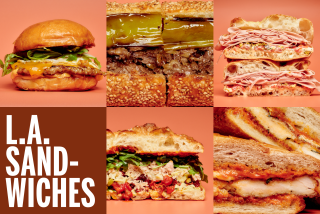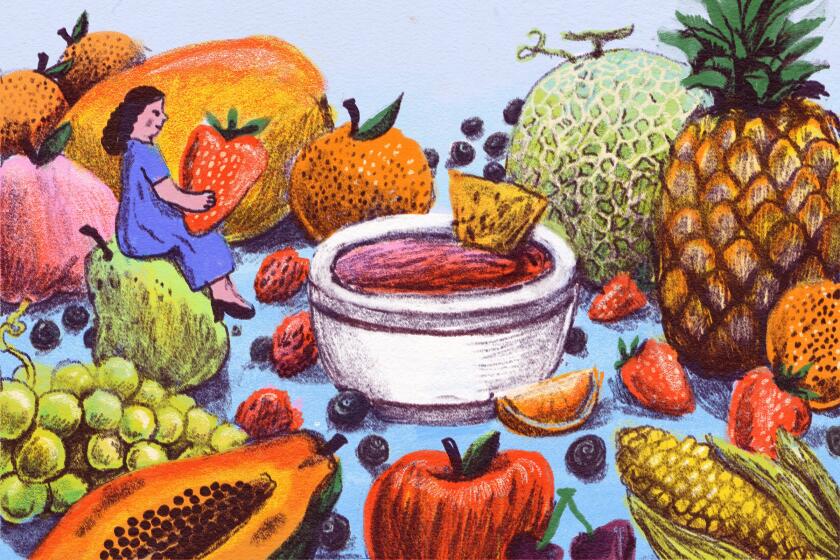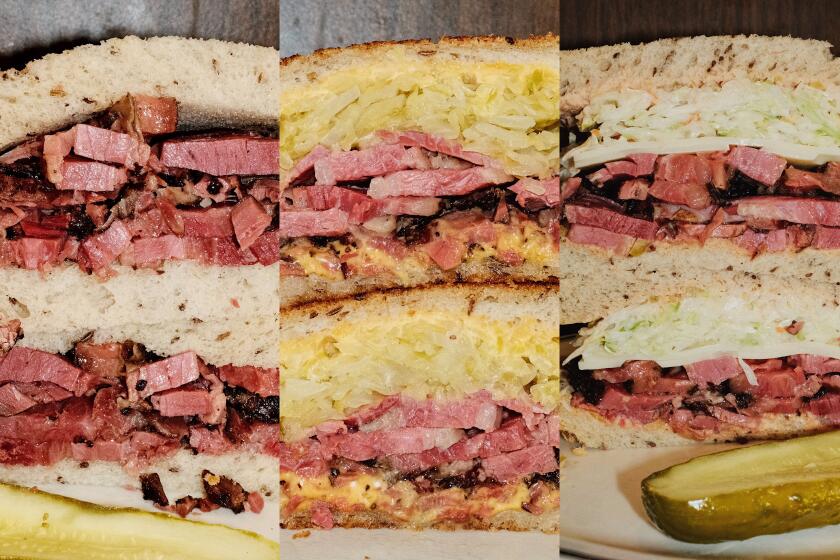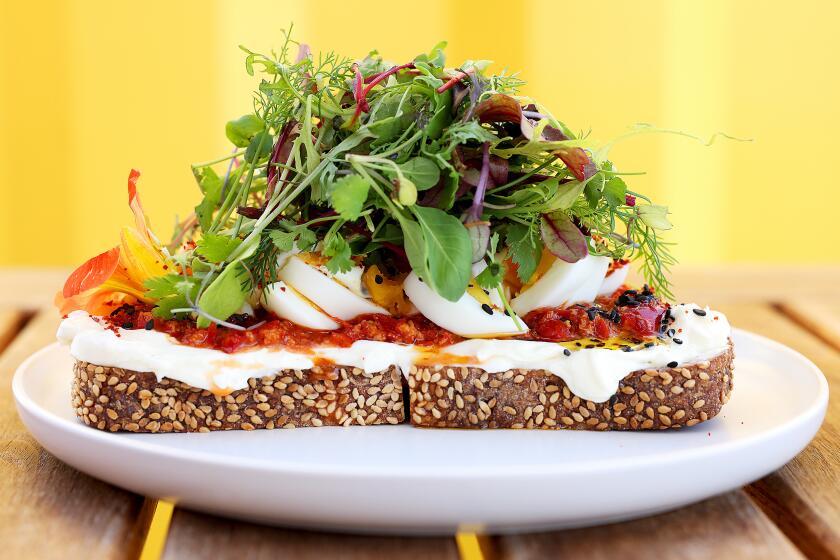The chili’s all gone but the giant bowls are still standing
The way Art Whizin told the story, he was sitting at the counter of a downtown burger joint called Ptomaine Tommy’s, trying to visualize the restaurant he wanted to build.
Then a truck-driver friend next to him slid over a chili bowl and said, “Here, Whizin, do something with this.”
And that’s how Whizin, the one-time amateur boxer, decided in 1931 to construct an eatery in the shape of a chili bowl. Why not? Merchants were putting up businesses that resembled ice cream cones, tamales, coffee kettles and sundry other objects -- all trying to catch the eye of passing motorists.
The 25-year-old entrepreneur opened his first Chili Bowl on Crenshaw Boulevard near Jefferson Boulevard after raising $1,200 by selling, among other things, his wife’s wedding ring and his roadster. The couple moved into a house nearby.
“Because he sold his car, he had to have his business within walking distance,” explained Jim Heimann, author of “California Crazy & Beyond,” a study of offbeat roadside architecture.
Whizin told Heimann in a 1978 interview that he sketched the design of the restaurant on the corduroy pants he seemed to always be wearing. Perhaps he didn’t want anyone else to get their hands on the plans.
Or perhaps “he was embellishing the story,” Heimann said with a laugh. “He was an interesting character.”
The Chili Bowl had no tables, just a 26-stool circular counter, and Whizin bragged that his young workers, most of them college boys, could “flip a pat of butter from the center of the counter to the edge of any of the 26 plates.”
The place was an immediate success with its specialty dish called the chili size, an open-faced hamburger smothered with the homemade goodness.
The restaurant was so popular, in fact, that the owner painted a “Pat. Pending” notation on the outside, thinking his design was unique enough to be patented. Instead, he drew fan mail addressed to “Pat Pending.”
Before the decade was out, Whizin had built 22 more Chili Bowls, including one on Florence Avenue in Huntington Park that, he recalled, was the only structure on the block that was undamaged by the 1933 Long Beach earthquake.
“It’s because of the circular shape,” he told the Times in 1985. “It gave evenly in all directions. The place was full and all 26 customers ran outside. After a couple of minutes, they peered inside the window, saw everything was OK and came back and finished their chili.”
The outside bathrooms were lighted with blue lights and became a running joke on the radio, with comics such as Fred Allen talking of plans to take his wife “out to the Blue Room at the Chili Bowl.”
Whizin liked jokes too, one of his slogans being, “We cook our beans backwards -- you only get the hiccups.”
During World War II, Douglas Aircraft in Santa Monica asked him to keep his Chili Bowl on Pico Boulevard near Bundy Drive open 24 hours a day for aircraft workers on the late shift.
But with the end of the war, Whizin became tired of the business. College men no longer wanted to work the counter, he told Heimann, a cultural historian whose other works include “Car Hops and Curb Service -- A History of American Drive-in Restaurants (1920-1960).” Whizin converted several of the buildings into Punch & Judy Ice Cream Parlors but later closed those.
He built a mall in Agoura Hills that still bears his name, though he had sold it long before his death in 1994 at the age of 88. It, too, has a distinctive shape -- a pyramid on one roof is a familiar sight to drivers on the 101 Freeway.
Today, four Chili Bowls survive in various forms.
One serves up sales talk. It houses a used-car business, the Valley Dealer Exchange, on San Fernando Road in Glendale.
Another old Chili Bowl, the one in Huntington Park that survived the 1933 quake, now withstands nightly musical vibrations as the Guadalajara Nightclub.
The third is a Chinese restaurant, Kim Chuy, on Valley Boulevard in Alhambra, and the fourth is the Pico Boulevard one that fed so many Douglas workers during World War II. It’s called Mr. Cecil’s California Ribs.
The circular counters of the last two have been replaced by individual tables and booths. But their old-time look remains, and diners seem to like it
“The place is a hole-in-the-wall full of goodness,” Anita W. of Monterey Park said of Kim’s on the yelp.com dining site.
Jason W. of Venice marveled of Mr. Cecil’s Ribs on the same site. “It feels like you are eating in a mechanical garage in the ‘50s. The bathrooms are even outside.”
Some of the glamour is gone, though. The bathrooms no longer have blue lights.
Like Whizin more than seven decades ago, these four businesses have done something with a chili bowl, a much larger chili bowl. At least they didn’t have to consult Whizin’s corduroy pants.
--
steveharvey9@gmail.com
More to Read
Eat your way across L.A.
Get our weekly Tasting Notes newsletter for reviews, news and more.
You may occasionally receive promotional content from the Los Angeles Times.










